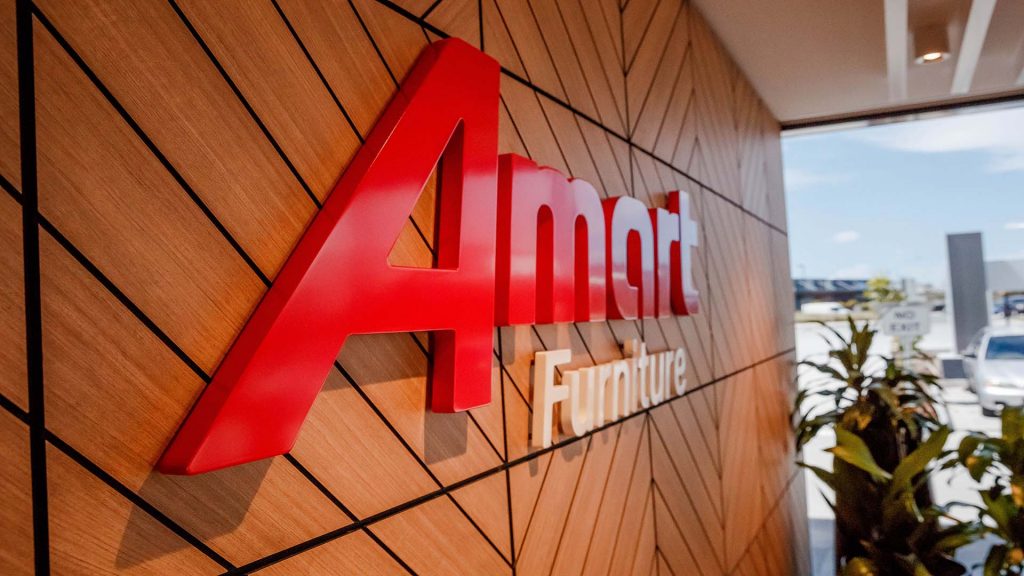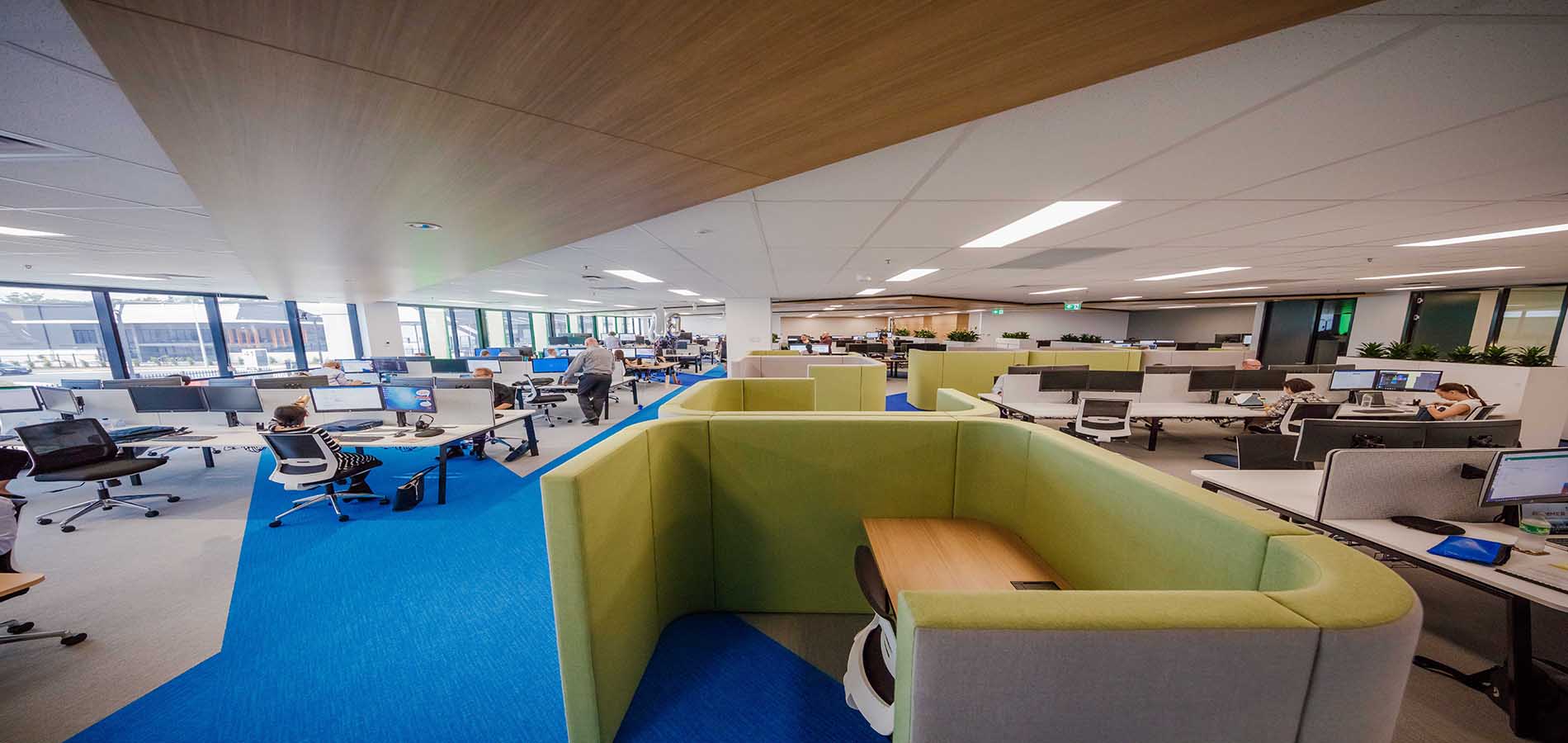
Amart Furniture transformation amplifies culture and employee engagement
A key to sales success is to understand the product you are selling. When you are selling the products that make a house a home it’s even more important.
Your customers are trusting that the furniture they buy will withstand the rough and tumble of family life, be well priced and still look good.
Being able to tell a customer about the craftsmanship of the dining table or how the mattress is sprung can help them make the right decision. Taking the time to really understand what the customer is looking for encourages satisfaction and loyalty – and in the process fuels the growth of the business.
Amart Furniture is one of Australia’s leading furniture retailers with 63 stores across the country. Keeping Amart’s geographically diverse team of over 2000 up-to-date with products and developments is a key goal for the business.
It also knows that additional benefits come from listening to the frontline about what customers are looking for such as product ranges, value and quality. It’s that sort of communications feedback loop that can help distinguish a business from its competition and build reputation and customer loyalty.
Traditionally Amart relied on communicating via emails, newsletters and cascading information from senior leaders to managers and the frontline. As the business grew, internal communication become more challenging, customer expectations evolved, home furnishing trends accelerated and a fresh approach was required.
Nick Shelton, General Manager of People at Amart Furniture, stresses that the transformation has proven vitally important for the company to be able to engage its team to better serve customers and accommodate their changing needs. “Communication is everything for us. In an organisation that covers 70 independent sites across the country, it is critical to be able to share information with the entire nation, simultaneously, and that’s always been a huge challenge.”
But it was a challenge that had to be tackled because as Shelton says, “effective bottom-up communication is as important as top-down.”
“For the first time, our people are able to get more involved and contribute in ways previously not possible. It gives our senior leaders, who are steering our corporate strategy, greater visibility of our frontline’s observations and ideas.” – Nick Shelton, GM of People at Amart Furniture
Tackling transformation
Amart began its corporate and digital transformation in 2011 when they made a move to more secure and resilient cloud computing. In 2017, the National Store Support Centre team transitioned to a purpose-built facility equipped with state-of-the-art technology including Surface Hubs.
With those foundations in place the National Store Support Centre, who are responsible for creating the systems, tools and processes to enable stores to operate effectively, had been well placed for continuous improvement.
Without a frontline digital transformation though, the company was still relying on traditional communication channels.
Shelton explains that “we’ve previously relied on the “cascade” effect of business communication. When that happens, the core message is inevitably diluted, and the team members who are the receivers of that information are not always clear about what are we trying to achieve.
“We’ve experienced a significant amount of growth, and it was important for us to share the wonderful things about our business and immerse our new team members in our culture. We needed to adopt a more efficient and effective way of communicating with our team, and empower our team to communicate what they are experiencing to us.”
“The digital transformation for Amart Furniture was a major shift for us. Technology has allowed us to communicate with all of our teams instantaneously.”
Microsoft 365, Yammer and Microsoft Teams together form the cloud-based communications and collaboration fabric for Amart that has, according to Shelton “amplified our culture and engaged our team across the nation.”
While technology has been a huge support, Shelton notes that the right culture is essential to successful transformation. Amart partnered with Adopt & Embrace to ensure that culture and technology worked in harmony to deliver the impact that the business sought.

Communication is key
Communication is at the heart of retail culture. It occurs between the customer and sales assistant, the assistant and their peers, the team and their manager, the supplier and the retailer.
Introducing Yammer means that when Amart launches a new product, process or campaign it can tell the entire Amart community about it, and get their immediate feedback.
According to Steve Norman, Amart’s General Manager of Buying, it’s made a huge difference.
“One of my big challenges was to get our message out there about everything we’ve done to transform our range, transform our value, and transform our process and quality.
“When we make a decision, you can be talking tens of millions of dollars on one product. So we’ve got to get it right. With Yammer, our store teams can influence our decision making through their endorsement and by reinforcing what our customers want. I think that’s what helps us make better decisions these days.”
He shares an example of how that makes such a big difference.
During a business trip to Asia, Norman shared a potential product to gauge whether the team thought it might sell.
“I did a post on a Sunday afternoon in China and had about 30 people come back straight away, commenting, “I can’t wait, and I want to be the person who tests the sample”. So that, for me, was one of the real resonating benefits of Yammer.
“When you get feedback like that from our teams, you know they’re engaged, they care about our products and are proud of what we do.” – Steve Norman, GM of Buying at Amart Furniture
Norman can also use the feedback from frontline staff to guide his discussions with suppliers about what Australian customers want. It’s already prompted improvements in packaging and labelling which has reduced Amart’s damaged goods costs with no costs incurred upfront – it’s just the benefit of improved communications across the business.
Engaged employees
While the company continues to grow, according to Shelton, the tighter integration between employees makes it feel as though Amart is smaller, more intimate.
“We’re now able to communicate without any hierarchy at all. Senior leaders, General Managers, our CEO, are all able to communicate with a team member on the other side of the country. Overnight, it has made our organisation feel more like family, because we’re all well connected, and we’re talking to each other all the time.
“Our CEO, Lee Chadwick, finds the most important part about Yammer is understanding what our team members are experiencing – what’s important to them. That helps us, as a senior leadership team, to guide our people’s strategy to provide new solutions to whatever their challenges may be.”
And that is paying dividends. Shelton says that the most recent national engagement survey showed the highest annual increase in employee engagement that Amart has ever experienced – and for that he believes Yammer should take a bow.
Customers talk to sales staff about Amart’s products, sales staff can instantly relay that feedback to the whole team, and the insights can influence strategy around colour, design, shape – or even new ranges of furniture. Because staff are more intimately involved in the business they feel more valued and are more engaged.
He’s aware that the extra transparency may seem confronting, and that some organisations may baulk at the idea of having first line staff with a hotline to a General Manager or the CEO.
“I believe that introducing a communications platform that connects everybody across the nation has given us a great competitive advantage, because it’s enabled us to change systems and processes and communicate those changes with immediate effect.” – Nick Shelton, GM of People at Amart Furniture
“My advice to any HR professional would be to embrace that level of transparency and make sure that you don’t over-regulate the system. Let it happen organically without any rules, because at the end of the day, what we find is that our culture already exists. Yammer is a system that amplifies that culture,” says Shelton.
The other tool that has helped build Amart’s culture is Microsoft Teams. One of the first groups to use the platform is the Property division which collaborates on sites nation-wide.
Amart is so widely dispersed that the team is never in the same room at the same time. Once Microsoft 365 was deployed the group quickly identified Teams as a way to create a virtual room that everyone could enter. Without any formal training the group quickly adopted Teams for project or work tasks associated with building or refurbishing stores.
In each of those projects there can be thousands of moving parts – Teams keeps track of everything, and ensures everyone stays on the same page, and focussed on deadlines.
Shelton explains that Amart runs multiple projects each financial year. Microsoft Teams will help avoid project clashes and overruns, enabling “a very clean, coherent, streamlined approach to how we deliver a series of game-changing initiatives across the nation.”














